*By Pedro Roig
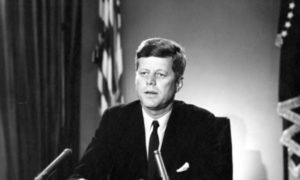
The Cuban Missile Crisis was the most dramatic event of the Cold War. Fifty-seven years ago, the U.S. and the Soviet Union stood on the threshold of a nuclear holocaust. The possible magnitude of the worldwide destruction can scarcely be overstated.
The strategic concept for deploying nuclear missiles in Cuba was presented to the Soviet Politburo by Premier Nikita Khrushchev.
In his autobiography, Khrushchev wrote: “My thinking went like this: If we install the missiles secretly and the U.S. discovers them after they were already poised and ready to strike, the Americans would think twice before trying to liquidate our installations by military means.”
In October 1962, the U.S. nuclear arsenal was decisively superior to Russia. Washington could count with over 400 Intercontinental Ballistic Missiles (ICBM) compared to 78 ICBMs in the Soviet arsenals. In addition, the overwhelming nuclear punch of the Polaris submarines, and the devastating striking power of over 1,300 bombers with nuclear ordinance, as opposed to less than 200 was a huge deterrence in favor of the U.S.
Yuri Pavlov, former head of the Soviet Latin America’s Foreign Ministry and responsible for Soviet-Cuban relations, wrote in 1994: “The Soviet leadership decided to use the island in order to bring a substantial part of the United States territory within range of Soviet Medium Range Ballistic Missiles (MRBM), armed with nuclear warheads. Khrushchev, who initiated this idea, hoped that it would help to address the imbalance (in) strategic nuclear force.”
Moreover, in the early 1960’s the delivery time from the launching site to the target was a crucial factor. It took approximately 30 minutes for the Soviet missiles to reach the United Sates. This was enough time for the Americans to retaliate with a deadly counterstrike.
From Cuba, the Soviet missiles would have been able to destroy most of the U.S. military and urban centers in 7-10 minutes.
Another important factor was that the missile accuracy significantly increased with the proximity of the target, making the Marxist island of Cuba the perfect choice to greatly improve Soviet nuclear capacity.
In May 1962, the newly appointed Ambassador Alexander Alexeyev, presented the plans to Fidel Castro, who welcomed the idea. On July 2, Raúl Castro and Ernesto “Che” Guevara arrived in Moscow. They where received at the airport by Marshal Rodion Malinovsky and Politburo member Anastas Mikoyan. Next day, Raúl Castro and Guevara met with Khrushchev and arranged the details of the Soviet missiles’ deployment in Cuba, that was to be always under the direct control of the Soviet military command.
In mid-July 1962, Soviet cargo ships began moving out of the Black Sea for Cuba. It was to be a secret operation to allow the full deployment of the nuclear missiles before the U.S. discovered it. A dangerous gamble!
On September 8, the freighter Omsk brought the first shipment of the MRBM missiles. Seven days later the Poltava arrived at the Port of Mariel, continuing the delivery of the nuclear rockets that could destroy most cities in the U.S.
The first report of large containers been transported from Mariel to the Rosario mountains in Pinar del Rio was provided to Washington by the Cuban underground resistance.
On August 10, 1962, after analyzing the reports sent by the Cubans, the CIA Director John Mc Cone dictated a memorandum for President John Kennedy expressing his belief that Soviet missiles where arriving in Cuba. On August 17, based on additional information from the Cuban underground members, CIA Director McCone presented to a high-level administration official his circumstantial evidence indicating that the Soviet were constructing sites platform to place nuclear missiles in Cuba.
Secretary of State Dean Rusk and Secretary of Defense Robert McNamara disagreed with McCone’s assessment arguing that the Russian build up was purely defensive. But on August 23, president Kennedy called a meeting of the National Security Council (NSC) to discuss John McCone’s concern that the Soviet where constructing sites platform for missile in the island.
Although Dean Rusk and McNamara argued against McCone’s evidence, Kennedy ordered that a contingency plan to deal with the possibility of Soviet nuclear missiles in Cuba should be drawn up, including the military option that might be exercised by the U.S. to eliminate such a threat.
On September 7, the U.S. Tactical Air Command established a task group to begin developing plans for air attacks to be carried out before an airborne and amphibious landing in the island.
Early in the morning of October 14, a U-2 spy aircraft flew over western Cuba. The photographs are the first hard evidence that the Soviets where deploying nuclear missiles in Cuba.
October 15, – evening: Key Kennedy administration officials are tracked down in Washington and briefed about the discovery of the missiles. National Security Advisor McGeorge Bundy decided to wait until morning to alert President Kennedy. Bundy later stated that he chose to wait because it was not possible to prepare a detailed presentation until morning and because he feared that a hastily summoned meeting at night would jeopardize secrecy.
October 16, – 8:45 a.m.: McGeorge Bundy informed President Kennedy that “hard photographic evidence” had been obtained showing Soviet nuclear sites and missiles in Cuba. Kennedy immediately call an 11:45 a.m. meeting and dictated the names of the fourteen or so advisers he wanted present. This is the group that became known as the “ExComm” – the Executive Committee of the National Security council. Later that morning, President Kennedy briefed his trusted and dear brother Robert.
October 16, – 11:50 a.m.: The first meeting of the ExComm convened. Photographic evidence was presented to the group, including pictures of missile sites under construction with canvas-covered missile trailers.
For the next five days, in absolute secrecy, the president and close advisors analyzed the available options. At the end, it was decided to confront, head-on, the Soviet challenge.
On Friday, October 19 at 9:45 a.m. in a cabinet room meeting at the White House, the analysts confirmed that there were increasingly certain that two sites near Guanajay were intended for the 2,200 mile-range (MRBM) nuclear missiles. Seeing new evidence of a nuclear warhead storage site in the area, the analysts predicted that the missiles could be operational in 2-6 weeks. The Joint Chief of Staff recommended a massive air strike against all military targets in Cuba, without warning.
October 21: Despite White House secrecy precautions, several newspapers had, by this time, pieced together most of the details of the crisis. Pierre Salinger White House Press Secretary notified President Kennedy in four separate calls during the day that security was crumbling. To keep the story from breaking, Kennedy phoned Max Frankel at the New York Times and Philip Graham at the Washington Post and asked Robert McNamara to call John Hay Whitney, the publisher of the New York Herald Tribune. All three agreed to hold their stories.
The crisis had reached a point where the U.S. government had to openly confront the Soviet Union threat to its national security.
On October 22, Kennedy addressed the nation in a landmark speech, warning unequivocally that his government would not allow the presence of Russian missiles on the island and setting an exclusion zone of 500 miles around Cuba for any Soviet ship that transported military equipment.
The Soviet Ambassador Dobrynin believed that the Kremlin was surprised and confused by the forceful American reaction. The Soviet Politburo did not consider going to war as an option.
In his memoirs Dobrynin said: “The fatal miscalculation was made by Khrushchev himself. He did not anticipate that his adventurous thrust would be discovered in time for Kennedy to organize a sharp reaction, including a direct confrontation.”
From that moment on, events unfolded at dizzying speed. On October 23, Robert Kennedy began direct talks with Dobrynin. The Russian ambassador was informed by the president’s brother that the U.S. was ready to destroy the missile bases and launch an invasion of Cuba if the missiles were not dismantled and removed.
Immediately, Robert Kennedy stressed that he wasn’t talking about weeks but hours. President Kennedy gave instructions for a provisional Cuban government to be prepared with José Miró Cardona as leader of a free Cuba.
The roles had been reversed. Declassified Soviet documents indicate that it was the Russian leaders who were surprised and hesitant at the firmness of President Kennedy, who was willing to wipe out the Russian missile installations in Cuba.
It was at this critical moment on October 26 that Fidel Castro’s disregard for the welfare of the Cuban people became evident. He wrote to Khrushchev, calling on the Soviets to launch a pre-emptive nuclear attack against the Unites States.
The next day, a U-2 plane was shot down over Cuba. The crisis became highly dangerous. The time for negotiations was running out. Military action was a matter of hours away. The final chapter of Castro’s regime was about to begin when suddenly the Soviet Politburo blinked and gave up the deployment of nuclear missiles in Cuba.
The crisis was resolved with the withdrawal of the missiles from the island in exchange for a promise that the United States would dismantle its missiles in Turkey and would not invade Cuba. Because of the immediacy of the planned U.S. military action, Khrushchev responded on October 28, via Radio Moscow, that the Kremlin accepted Kennedy’s demand.
Fifty-seven years later there are several unanswered issues on the outcome of the Cuban Missile Crisis. John Kennedy was assassinated a year later by a Castro supporter. Nikita Khrushchev was ousted by the Politburo two years later for his embarrassing fiasco in Cuba, and Fidel Castro survived until his death in 2016 as a senile tyrant of a failed Marxist-Leninist revolution.
* Pedro Roig is Executive Director of the Cuban Studies Institute. Roig is an attorney and historian that has written several books, including the Death of a Dream: A History of Cuba. He is a veteran of the Brigade 2506.

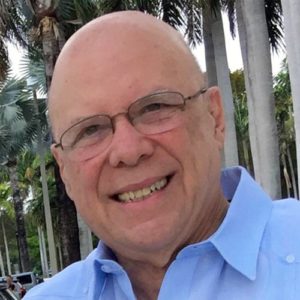
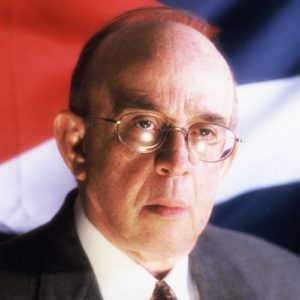



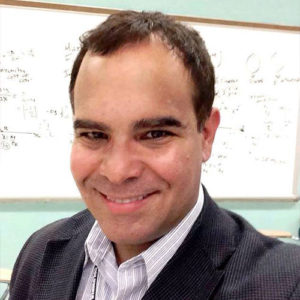

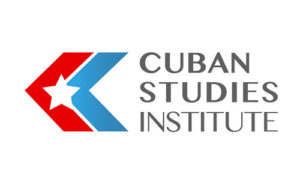

5 thoughts on “THE CUBAN MISSILE CRISIS (October 1962)”
Hal Hendrix Miami Herald and CIA was the first to know of the missiles and impatient that nothing was being done, he published, won the Pulitzer and was demoted by the agency
La mayoría de los SS-4 (Sandal) aun no estaban combativos.Es decir ,no se les habían montado las ojivas nucleares. Uno de los silos ,en un anillo defensivo en la zona lejana estaba protegido ” por baterías AAA de 30 mm de fabricación checa. Este silo se encontraba emplazado cerca de los Palacios ,Pinar del Rio donde hoy se encuentra la escuela nacional de Tropas especiales FAR. Si se hubiera producido el ataque sorpresivo de la FA estadounidense cuando estaba previsto ,hubieran cogido a los “bolos” “asando maíz” ,no hubiese habido golpe de respuesta ,al menos desde territorio cubano y presumiblemente tampoco desde la URSS. Hubieran muerto miles de cubanos pero el comunismo no hubiera avanzado mas no solo en Cuba ,si no en toda la América Latina.
Very revealing details of those moments not before made public. This asserts the high caliber of the Cuban Studies Institute research sources and analysis. As always, my admiration for your patriotic work! Dr. Joel Garcia Esteve
On September 8, the freighter Omsk brought the first shipment of the MRBM missiles.
Is this actually August 8?
Manny Cubans in Miami like me, went to La Torre de la Libertad, ( Freedom Towers ) in October 1962 when the USA open the enrollment for us to go volunteer’s to the US Army also many others Cubans applied in others cities around the USA. We went first to Fort Knox in Kentucky and later to Fort Jackson in South Carolina
Jose Pepe Cancio Goudie
Comments are closed.